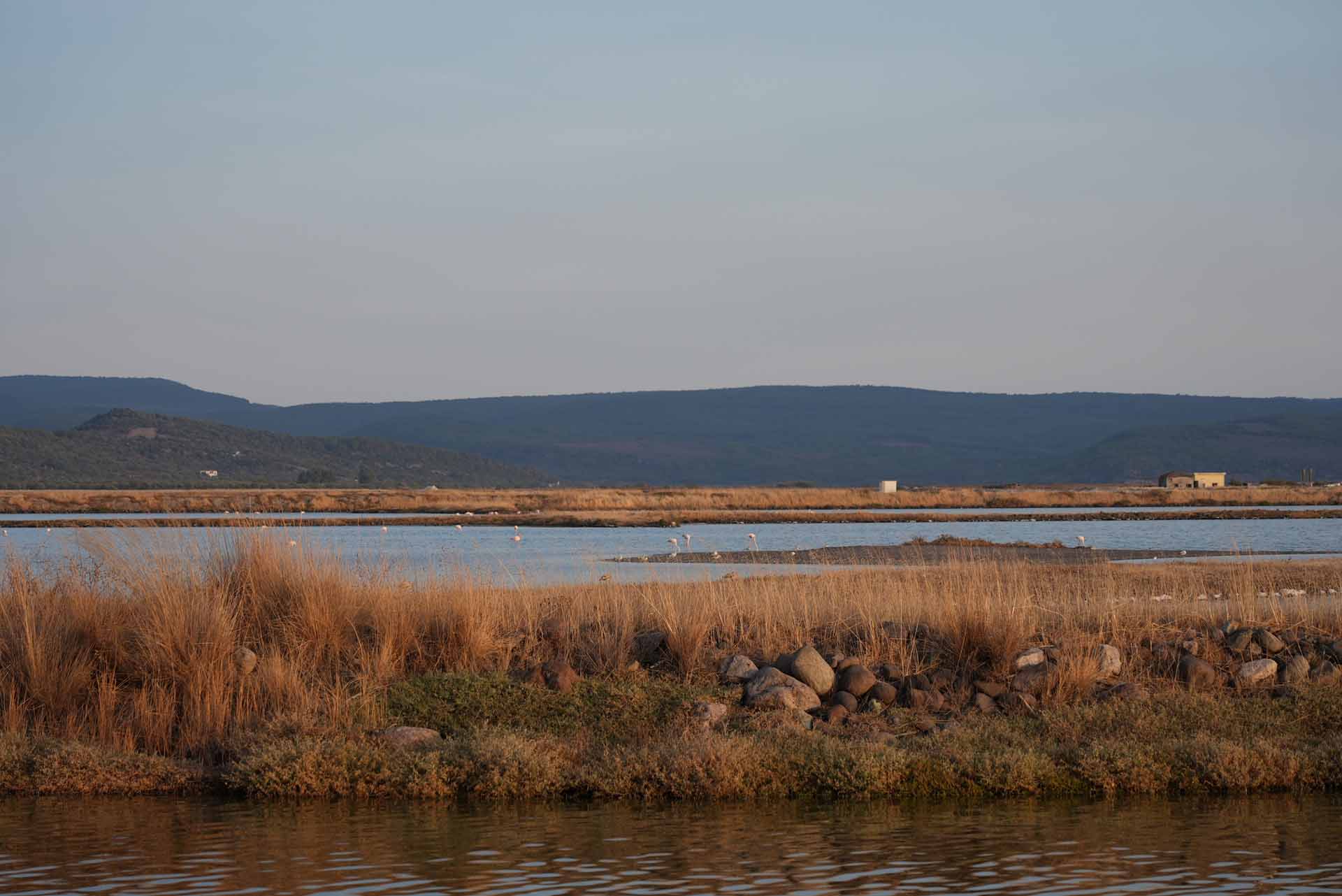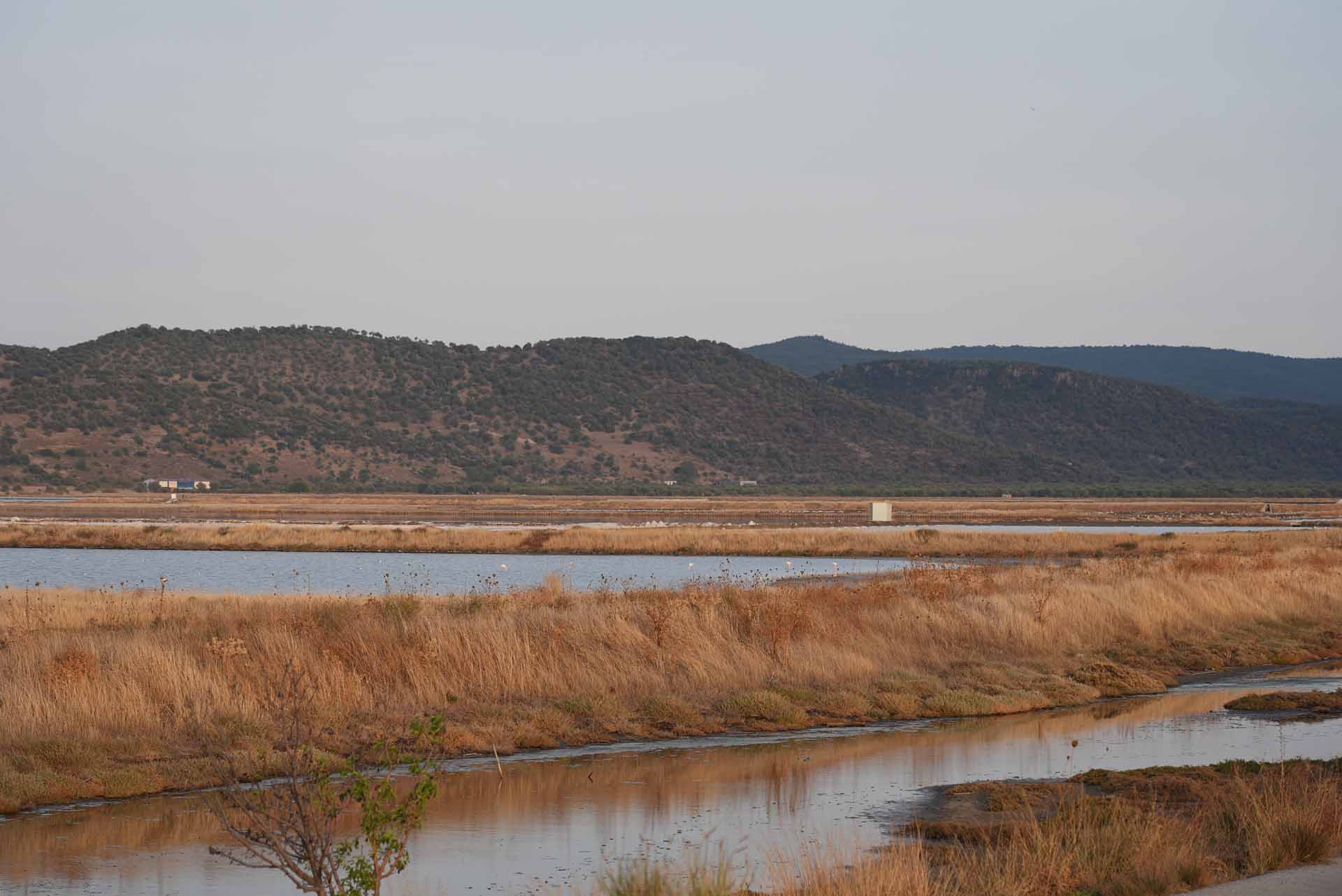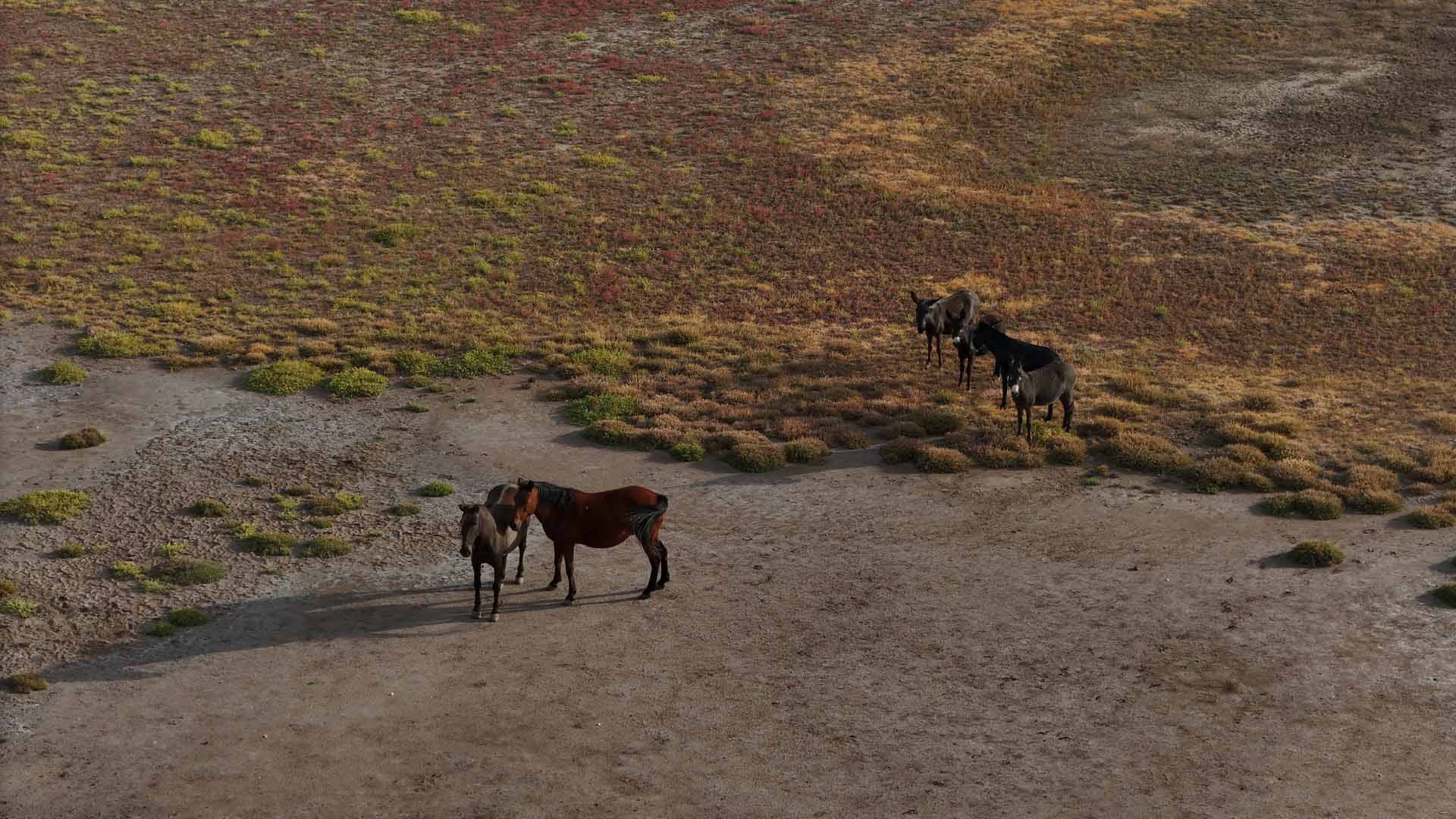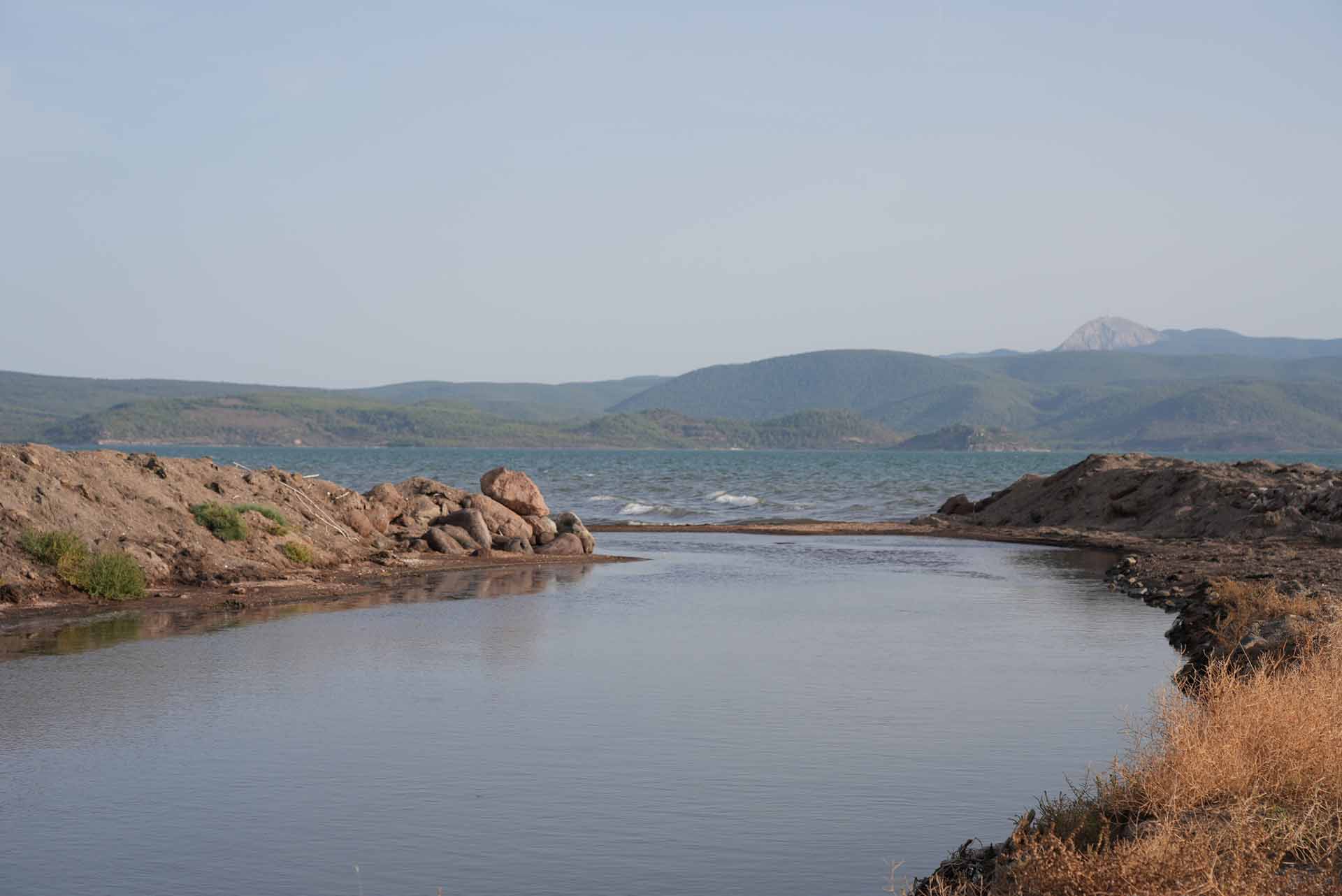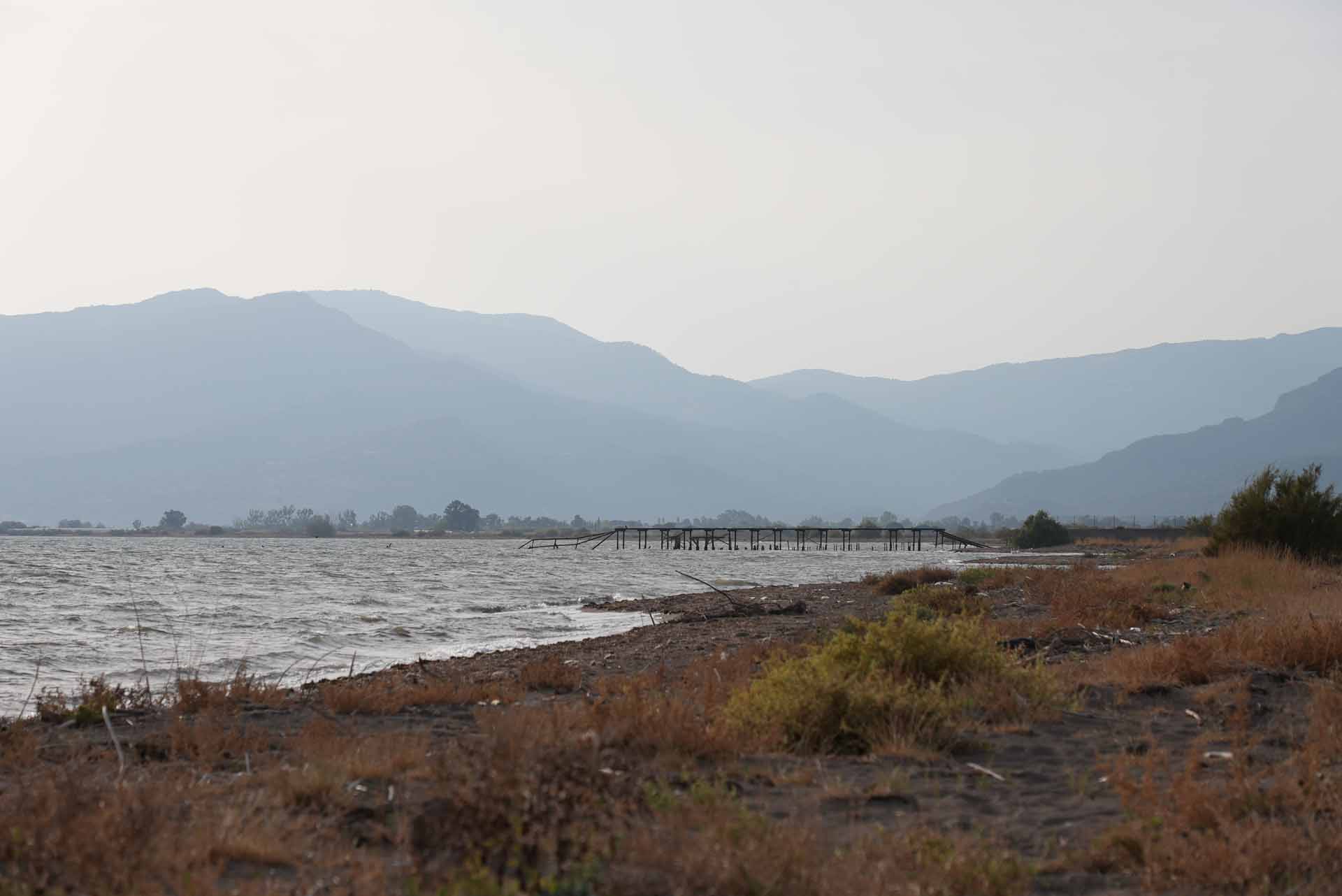Lesvos currently has two salt pans: in Kalloni and Polichnitos. Until the 1860s, a third salt pan operated in Perama, Gera. The Kalloni salt pans, the island’s largest and oldest, span 2,630 hectares, with the broader habitat encompassing 4,600 hectares. Though salt extraction on the island dates back to antiquity, the Kalloni salt pans have existed in their modern form since the 1920s.
Salt production has always played an important role in the region’s economy. In addition to its use as a seasoning, raw salt was vital for preserving olives during storage. Large quantities of salt were also employed in soap making and tanning. In 1874, part of the Kalloni salt pans was drained and redistributed to landless islanders for cultivation.
During the 1950s, salt production was a labour-intensive process involving many locals, as mechanisation had not yet fully taken hold. Since 1995, the salt pans have been privately managed, significantly boosting output. In their first year of operation, production reached 40,000 tons of salt. Today, the Kalloni salt pans rank as Greece’s third-largest by area, and second-largest by production.
The broader wetland area is included in the NATURA 2000 protection network and is one of Europe’s most important bird habitats and is great for birdwatching.




